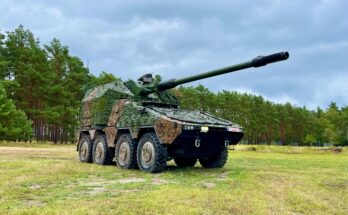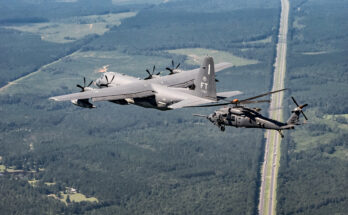 This information was excerpted from Forecast International’s recent webinar, What U.S. Defense Contractors Need to Know About the Russia-Ukraine Conflict. See the full webinar here.
This information was excerpted from Forecast International’s recent webinar, What U.S. Defense Contractors Need to Know About the Russia-Ukraine Conflict. See the full webinar here.
The U.S. and other NATO countries have all watched with bated breath while Ukraine has successfully sustained a counteroffensive to the Russian invasion, surprising ordinary citizens and world leaders alike. By effectively defending Kyiv and reclaiming Kherson, Ukraine has proven that with its enduring sense of unity, combined with backing from NATO, it has a strong chance of winning the war.
But the struggle does not end here. Ukraine, the U.S., and numerous EU countries still need to backfill equipment, find solutions to production issues, and maintain current operational equipment. That’s where defense contractors come in.
How have Ukrainian and Russian militaries and budgets been affected?
Through both monetary and equipment-based aid, Ukraine has grown to become one of the top six largest defense spending nations in Europe practically overnight. The U.S. has provided around $18.5 billion in aid to Ukraine. The U.K., Poland, and the Baltic countries have also been key contributors to the Ukrainian war effort. Weapon supplies to Ukraine have run the gamut of everything the land forces need to carry out this war, including howitzers, anti-tank and anti-aircraft weapons, shoulder-fired weapons, armored vehicles, and reconnaissance drones.
Leading experts say Russia is at its weakest since the collapse of the Soviet Union, and it wouldn’t be in a position to defend itself outside of a nuclear conflict. Because Russia has had a significant number of casualties and lost a lot of hardware, the country is feeling immense pressure to focus its efforts on reparations and equipment procurement. Because of this, Russia will have to put its sales and resupply of spare parts to existing clients on hold. This provides an opportunity for contractors to sell to an array of Russian clients, including Vietnam and Serbia.
How has Europe been affected?
Many countries in the EU see Russia’s advancement into Ukraine as a threat. The threat of Russian invasion has become a particularly serious concern for countries that share a border with Russia or Ukraine. To combat that threat, many NATO countries are quickly attempting to reach their 2 percent NATO defense budget requirement.
Some EU countries are also providing as much aid to Ukraine as possible to keep Russia at bay. After providing this aid, these countries are left with minimal defense assets. France gave 16 howitzers to Ukraine, equivalent to a quarter of its total defense capability, and now it is in a position to quickly replace them. The U.S. has also urged its Central and Eastern European NATO partners to send their old Soviet-era equipment to Ukraine to sustain Ukrainian resistance efforts.
Other EU governments, such as Sweden and Finland, were quick to show interest in joining NATO, and they are aiming to hit the 2 percent defense budget target between 2025 and 2028. Public support in Finland and Sweden to join NATO was 30 percent before the Russia-Ukraine war and now sits at 70 percent, if not higher. Poland is aiming to spend 3 percent of its budget on defense by next year, extending every modernization program it has.
How can contractors help fill Ukrainian or European defense gaps?
Contractors can support Ukraine and EU countries in two primary ways:
1. Local Production
Ukraine’s production infrastructure and existing equipment have been key Russian targets throughout the war. That is a key area for contractors in the U.S. and EU. By assisting with local production of infrastructure, contractors can help ensure that Ukraine has enough munitions and that it can keep its equipment in service throughout the war.
2. Backfilling Equipment
Opportunities to backfill equipment are innumerable. Many NATO countries in Eastern Europe have sent most of their Soviet-era equipment to Ukraine, and now they are looking for opportunities to replace it. Some high-demand hardware includes updated anti-tank systems, small arms, ordnance, and armor. After providing equipment to Ukraine, the U.S. Army wants to backfill ammunition and artillery munitions, rockets, and ordnance systems. Other internationally in-demand systems include air defense systems, artillery, fire power systems, unmanned aerial combat systems, loitering munitions, targeting capabilities, and counterbattery radar.
What does the future of the conflict look like?
In the short term, the war will maintain an upward swing. Although Russia is struggling due to the successful counteroffensive from Ukraine, there is a question about how much support Russia can continue to get from other countries. Countries like China or India might continue to indirectly support Russia through trade or even provide assets. In some ways, the war in Ukraine has started a new Cold War with an East/West divide.
There is also the question of maintaining a steady flow of aid from the U.S. and EU to Ukraine. How long can the U.S. stay attentive to Ukraine as its primary foreign policy focus, and how much can Europe stand on its own feet without the U.S. as its guiding force?
To read more about how the war in Ukraine could come to an end, see this post from guest blogger Derek Bisaccio, a Forecast International analyst with a focus on the Eurasian international military markets.
Stay up-to-date on the Eurasian and European military markets with Forecast International.
Forecast International’s International Military Markets products examine the spending practices, force structures, equipment requirements, and military budget projections of over 120 countries in six regions, and detail how economic, political, and security trends are shaping their respective defense markets.
For 50 years, Forecast International intelligence reports have been the aerospace and defense industry standard for accurate research, analysis, and projections. Our experienced analysts compile, evaluate, and present accurate data for decision makers. FI's market research reports offer concise analysis of individual programs and identify market opportunities. Each report includes a program overview, detailed statistics, recent developments and a competitive analysis, culminating in production forecasts spanning 10 or 15 years. Let our market intelligence reports be a key part of reducing uncertainties and mastering your specific market and its growth potential. Find out more at www.forecastinternational.com



